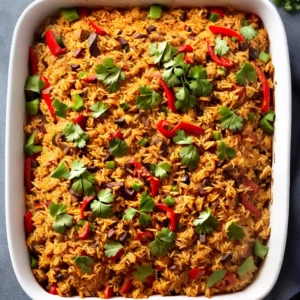How Many Onions in a Pound
If you’ve ever wondered how many onions are in a pound and needed a reliable measurement conversion guide, you’ve come to the right place. Accurate measurements are crucial in cooking, and understanding the conversion of onions can make a significant difference in your recipes. Whether you’re slicing, dicing, or cooking onions, having the correct measurements ensures the perfect balance of flavors in your meals.
So, how many onions are in a pound? On average, there are approximately 4 cups sliced or 2 cups cooked onions in a pound. This information is valuable when you’re following a recipe that calls for a specific amount of onions. Knowing the measurement conversion allows you to buy the right quantity of onions and prepare your dish with precision.
Key Takeaways – How Many Onions in a Pound
- One pound of onions is equivalent to approximately 4 cups sliced or 2 cups cooked onions.
- Accurate measurement conversions are essential for achieving the desired flavor balance in your recipes.
- Factors like onion density and preparation methods can affect the exact conversion.
- Understanding onion measurements helps you estimate the number of onions needed for a recipe.
- Use this guide to make accurate measurements and elevate your culinary creations.
Understanding Onion Measurements and Conversions
Before diving into the specifics, it’s important to understand the factors that influence onion measurements and conversions. When it comes to onions, their weight, size, and count can vary, making it essential to have accurate measurements in your recipes. Whether you’re slicing, dicing, or cooking onions, knowing how to convert their measurements will ensure the perfect flavor and consistency in your dishes.
Factual data: If you are wondering how many onions are in a pound, the answer is approximately 4 cups sliced or 2 cups cooked. This information can be useful when you are following a recipe and need to know how many onions to buy and slice. It is always important to have accurate measurement conversions when cooking, and this chart provides helpful equivalents for various vegetables. It is also worth noting that the conversion may not be exact due to factors like density and preparation methods.
To help you navigate onion measurements and conversions, here are some key tips:
- Weight to Volume Conversion: Converting onion weight to volume, or vice versa, is a handy skill in the kitchen. Use the provided conversion chart or table to estimate the volume of onions needed based on their weight. This is particularly useful when a recipe calls for a specific volume of onions rather than a certain number or size.
- Weight to Count Conversion: If a recipe specifies a certain number of onions but you have onions of different weights, you can use a conversion ratio or formula to estimate the required count. On the other hand, if you have a set number of onions but need to know how much they weigh, the conversion can work the other way around.
- Weight to Size Conversion: When a recipe calls for onions of a specific size classification, such as small, medium, large, or extra-large, you can use guidelines or measurements to determine the appropriate size based on their weight. This helps ensure that your dish turns out just right.
Remember, onion density and mass can also affect the measurement conversions. Denser onions will weigh more for the same volume, while less dense onions will weigh less. Additionally, different preparation methods, such as slicing or cooking, can cause variations in measurements. Adapting your recipes accordingly and using accurate measurements will help you achieve the desired flavors and textures in your culinary creations.

Incorporating accurate onion measurements and conversions into your cooking and baking is crucial for achieving delicious results. Understanding the factors that influence onion measurements and utilizing the provided conversion guide will elevate your culinary skills and ensure consistent and satisfying dishes every time.
Onion Weight to Volume Conversion
Converting onion weight to volume (and vice versa) is a handy skill to have in the kitchen, allowing you to determine the right amount of onions needed for a recipe. If you’re wondering how many onions are in a pound, the answer is approximately 4 cups sliced or 2 cups cooked. This information can be useful when you are following a recipe and need to know how many onions to buy and slice.
To better understand the onion weight to volume conversion, let’s take a look at the following chart:
| Onion Weight (pounds) | Onion Volume (cups sliced) |
|---|---|
| 0.25 | 1 cup |
| 0.5 | 2 cups |
| 1 | 4 cups |
| 1.5 | 6 cups |
It is always important to have accurate measurement conversions when cooking, and this chart provides helpful equivalents for various vegetables. However, it’s worth noting that the conversion may not be exact due to factors like density and preparation methods. It’s always a good idea to adjust the amount of onions based on your personal taste preferences and the specific requirements of your recipe.
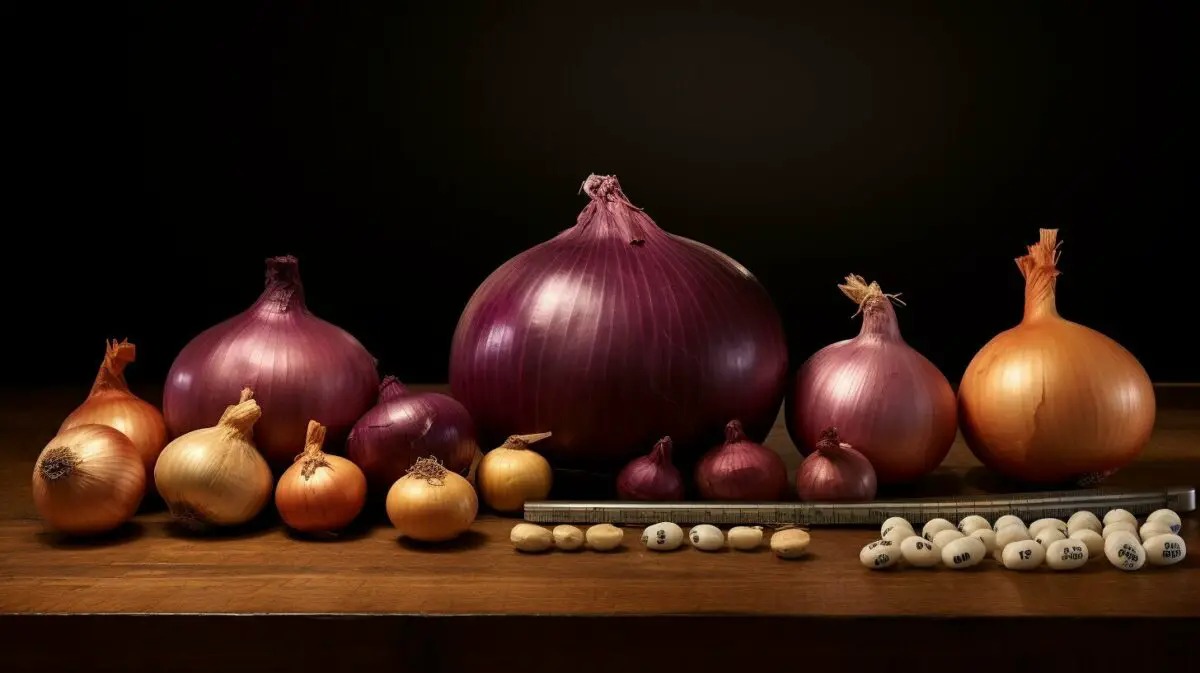
Having a clear understanding of how onion weight translates into volume is crucial for successful recipe execution. Whether a recipe calls for a specific weight or volume of onions, knowing how to convert between the two allows you to accurately measure the required amount. This is particularly useful when you don’t have a kitchen scale on hand or when a recipe provides measurements in a different format than what you’re accustomed to.
By mastering the art of onion weight to volume conversion, you can confidently prepare dishes that require precise measurements, ensuring your flavors are on point and your culinary creations are a success.
Onion Weight to Count Conversion
When you have a specific weight of onions in mind, converting it to the corresponding count (and vice versa) is essential for precise recipe execution. This chart provides helpful equivalents for various measurements. Keep in mind that the conversion may not be exact due to factors like density and preparation methods.
| Onion Weight (in pounds) | Onion Count |
|---|---|
| 1 | 2-3 medium onions |
| 2 | 4-5 medium onions |
| 3 | 6-7 medium onions |
| 4 | 8-9 medium onions |
| 5 | 10-11 medium onions |
It’s important to note that onion sizes can vary, so these conversions are approximate. Additionally, the size of each onion can also impact the count. For example, if you have larger onions, you may need fewer of them to reach a specific weight. It’s always a good idea to adjust based on your specific onions and recipe requirements.
Using this conversion chart can be a helpful starting point when determining the number of onions needed for your recipes. However, personal preference and taste should also be considered. Some recipes may call for more or fewer onions based on the desired flavor profile. Don’t be afraid to experiment and adjust the measurements to suit your own taste!
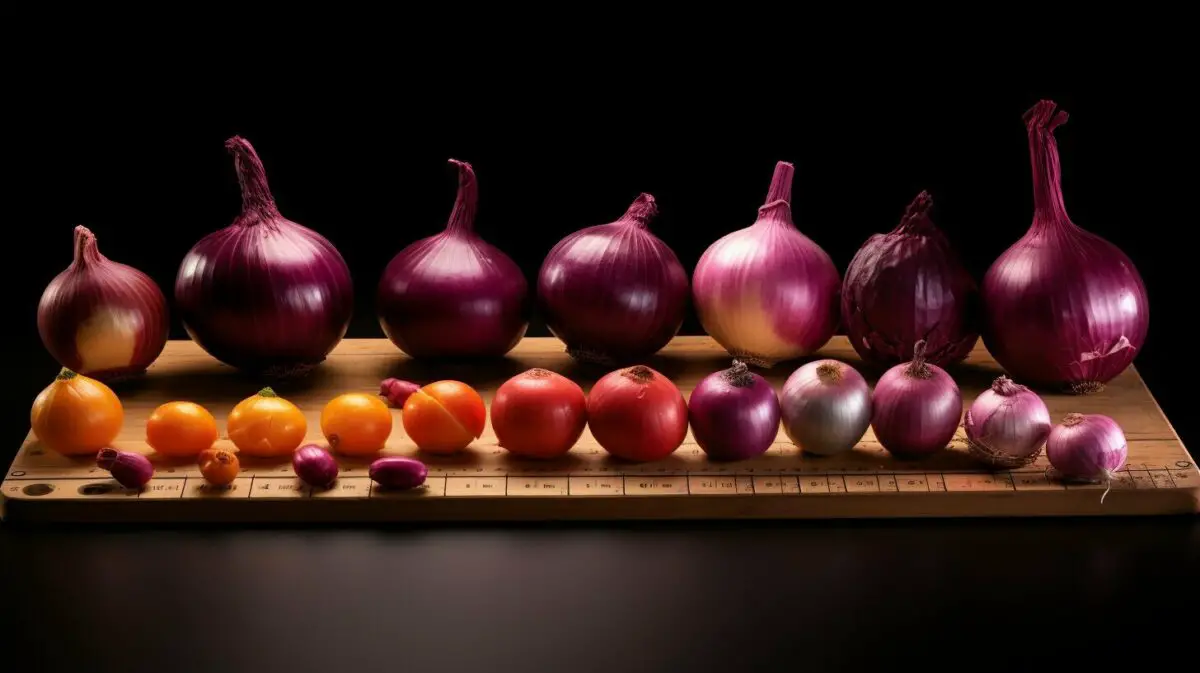
In conclusion, knowing how to convert onion weight to count (and vice versa) is a valuable skill in the kitchen. With the help of this conversion chart and a bit of practice, you’ll be able to accurately measure and prepare onions for your favorite recipes. Happy cooking!
Onion Weight to Size Conversion
Understanding how onion weight correlates with size categories is key for selecting the right onions for your recipe needs. When it comes to cooking, different recipes often call for specific onion sizes or quantities. By knowing how onion weight translates into size, you can ensure that you’re using the appropriate onions for your dishes.
Onions are typically classified into four size categories: small, medium, large, and extra-large. The size of an onion can vary based on factors such as the variety and growing conditions. However, there are general guidelines that can help you estimate the size of an onion based on its weight.
| Onion Weight | Onion Size |
|---|---|
| Less than 4 ounces (113 grams) | Small |
| 4 to 8 ounces (113 to 227 grams) | Medium |
| 8 to 12 ounces (227 to 340 grams) | Large |
| More than 12 ounces (340 grams) | Extra-large |
Choosing the Right Onion Size
When selecting onions for your recipes, consider the desired outcome and the size requirements specified in the recipe. If a recipe calls for medium-sized onions and you have small onions on hand, you may need to use additional small onions to compensate for the difference in size.
It’s important to note that these size categories are approximate and can vary depending on the onion variety. Additionally, the size and weight of an onion can change during storage and preparation. Factors like density and cutting methods can impact the final size and yield of the onion in your recipe. Therefore, it’s always a good idea to adjust your measurements and cooking techniques accordingly.
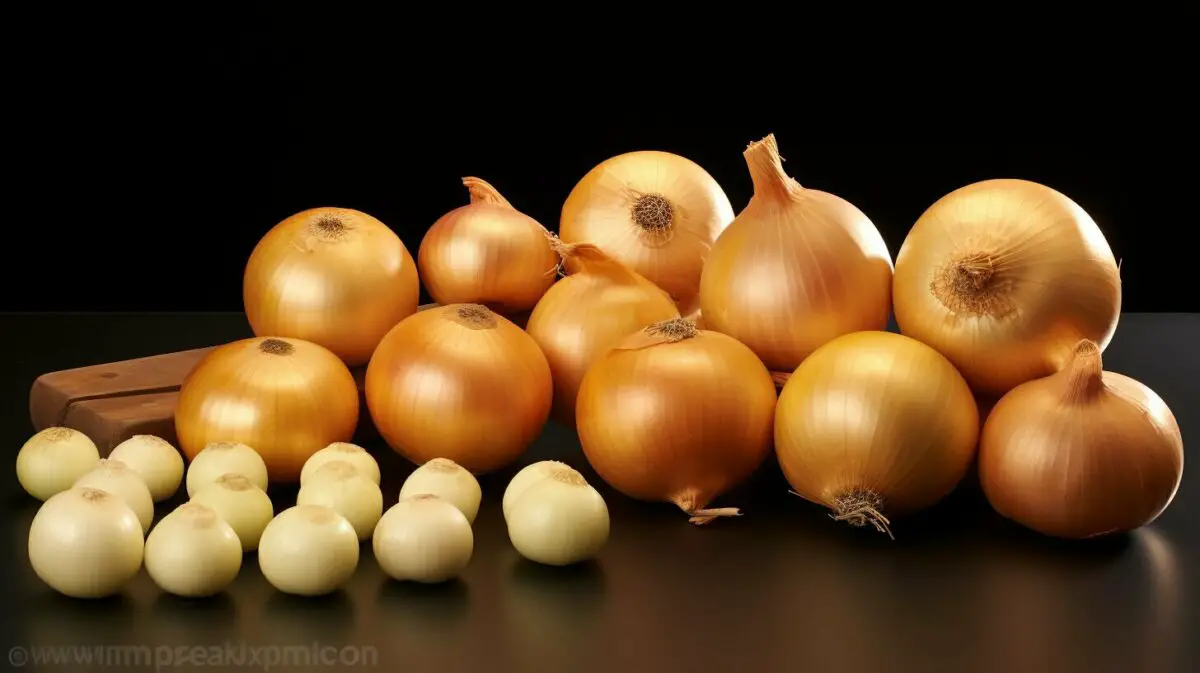
Having a basic understanding of how onion weight translates into size categories can help you determine the right amount of onions to use in your recipes. Use the table above as a reference to estimate the size of your onions based on their weight, and make adjustments as necessary. Remember, accurate measurements are crucial for achieving the desired flavors and textures in your dishes. Happy cooking!
Onion Density and Mass
It’s worth considering the density and mass of onions when converting between different measurement units to ensure accurate results. Onions, like many other fruits and vegetables, can vary in density depending on factors such as variety, freshness, and moisture content. This can impact the weight and volume of onions, which in turn affects measurement conversions.
Acknowledging the density and mass of onions is especially important when working with recipes that require precise measurements. For example, if a recipe calls for a specific weight of sliced onions, it’s crucial to understand how the density of the onions can impact the volume and ultimately the accurate weight required.
To help you navigate onion measurement conversions, here is a table that provides a rough estimate of onion density and mass:
| Onion Size | Density (g/cm³) |
|---|---|
| Small | 0.8 |
| Medium | 0.7 |
| Large | 0.6 |
| Extra-Large | 0.5 |
Keep in mind that these values are approximate and can vary depending on the specific onion and its moisture content. However, having a general understanding of onion density and mass can be helpful when converting between different measurement units, such as weight to volume or vice versa.
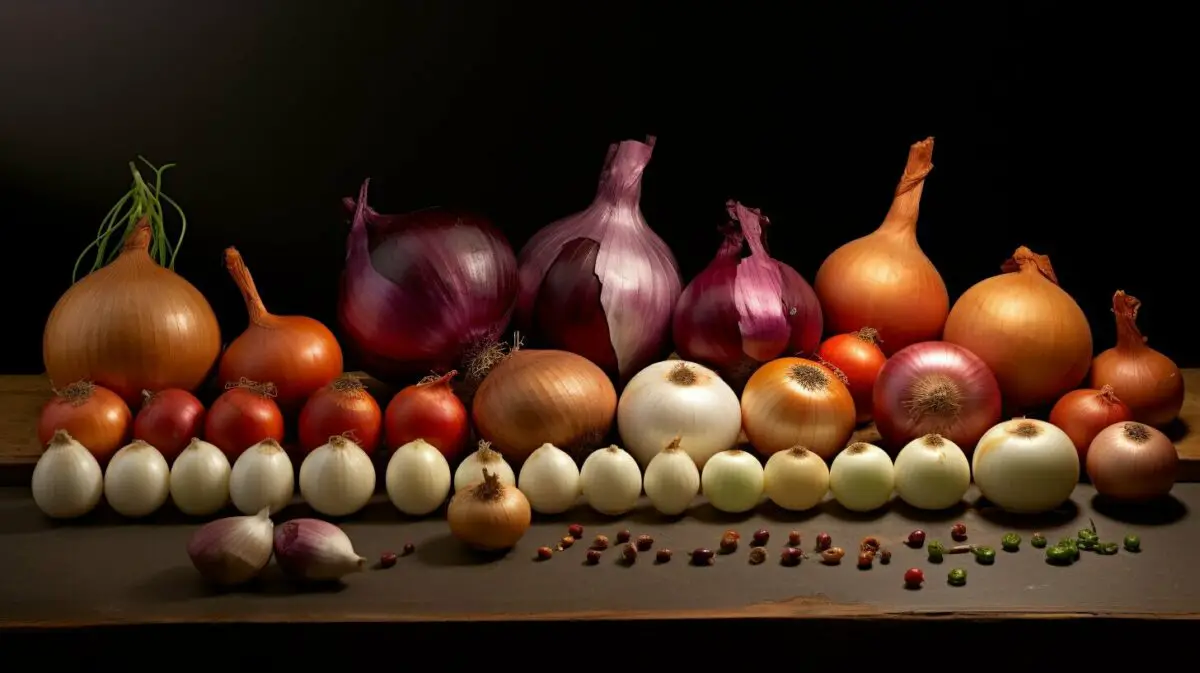
Remember, accurate measurements are key to achieving the desired results in your recipes. By considering the density and mass of onions, you can ensure that your measurement conversions are as precise as possible. Happy cooking!
Onion Measurement Conversion Factors and Ratios
To simplify onion measurement conversions, understanding the appropriate factors and ratios can save you time and effort in the kitchen. When it comes to determining the quantity of onions needed for a recipe, factors such as weight, size, count, and density all play a role. By familiarizing yourself with these conversion factors, you’ll be better equipped to make accurate measurements and ensure the success of your dishes.
Let’s start with onion conversion ratios. On average, one pound of onions is roughly equivalent to 4 cups sliced or 2 cups cooked. However, it’s important to note that these measurements may vary depending on factors like onion density and preparation methods. To get a more accurate estimate, it’s recommended to use a kitchen scale to weigh your onions.
In situations where you need to convert onion weight to count or vice versa, a general rule of thumb is to consider that larger onions will have a lower count per pound, while smaller onions will have a higher count. This can vary depending on the specific onion variety, but it provides a starting point for estimation.
To further assist you with onion weight to size conversions, here is a helpful table that provides approximate guidelines:
| Onion Weight (pounds) | Onion Size |
|---|---|
| Less than 0.25 | Small |
| 0.25 – 0.5 | Medium |
| 0.5 – 1 | Large |
| Above 1 | Extra-Large |
Remember that these size classifications are approximate and can vary depending on the specific variety of onion you are using. Keep in mind that density can also affect measurement conversions, so it’s always best to rely on weight rather than size when precision is required.

Equipped with the knowledge of onion measurement conversion factors and ratios, you can confidently tackle recipes that call for onions. Whether you’re slicing, dicing, or sautéing, accurate measurements will ensure that your dishes turn out just right. So grab your kitchen scale, refer to the conversion table if needed, and let your culinary adventures begin!
Onion Measurement Conversion Tables and Charts
Visual aids such as conversion tables or charts can be invaluable resources when working with onions in the kitchen. If you are wondering how many onions are in a pound, the answer is approximately 4 cups sliced or 2 cups cooked. This information can be useful when you are following a recipe and need to know how many onions to buy and slice. It is always important to have accurate measurement conversions when cooking, and this chart provides helpful equivalents for various vegetables.
Check out the following conversion table for onion measurements:
| Onion Measurement | Equivalent |
|---|---|
| 1 small onion | 4 to 6 ounces |
| 1 medium onion | 8 to 12 ounces |
| 1 large onion | 12 to 16 ounces |
| 1 extra-large onion | 16 to 20 ounces |
| 1 pound onion | 2 to 3 medium onions or 1 large onion |
Please note that these measurements are approximate and can vary based on factors like onion density and preparation methods. It’s always a good idea to adapt the measurements to suit your specific recipe and taste preferences. Now you have a handy resource to help you accurately measure onions for all your culinary creations!

Familiarizing yourself with common onion measurement equivalences can help streamline your cooking process and ensure consistent results. When following a recipe, it is essential to know the right amount of onions to use. Here are some handy equivalences to keep in mind:
- 1 medium-sized onion is approximately equivalent to 1 cup of chopped onion.
- 1 small onion is roughly equal to 1/2 cup of chopped onion.
- 1 large onion can be substituted with 1 1/2 cups of chopped onion.
- 1 pound of onions is about 4 cups of sliced onions or 2 cups of cooked onions.
These equivalences provide a helpful guide when it comes to estimating the right amount of onion in your recipes. However, it’s important to note that the exact conversion may vary due to factors such as onion density and preparation methods. Adjustments may be necessary based on personal preference and desired flavor.
Example of Common Onion Measurement Equivalences:
Here’s a quick reference table summarizing some common onion measurement equivalences:
| Type of Onion | Equivalent Amount |
|---|---|
| Medium-sized onion | 1 cup chopped |
| Small onion | 1/2 cup chopped |
| Large onion | 1 1/2 cups chopped |
| 1 pound of onions | 4 cups sliced or 2 cups cooked |
By referring to these equivalences and incorporating accurate onion measurements into your cooking, you can achieve the desired flavor and consistency in your recipes. So next time you’re in the kitchen, you’ll know just how many onions to add!
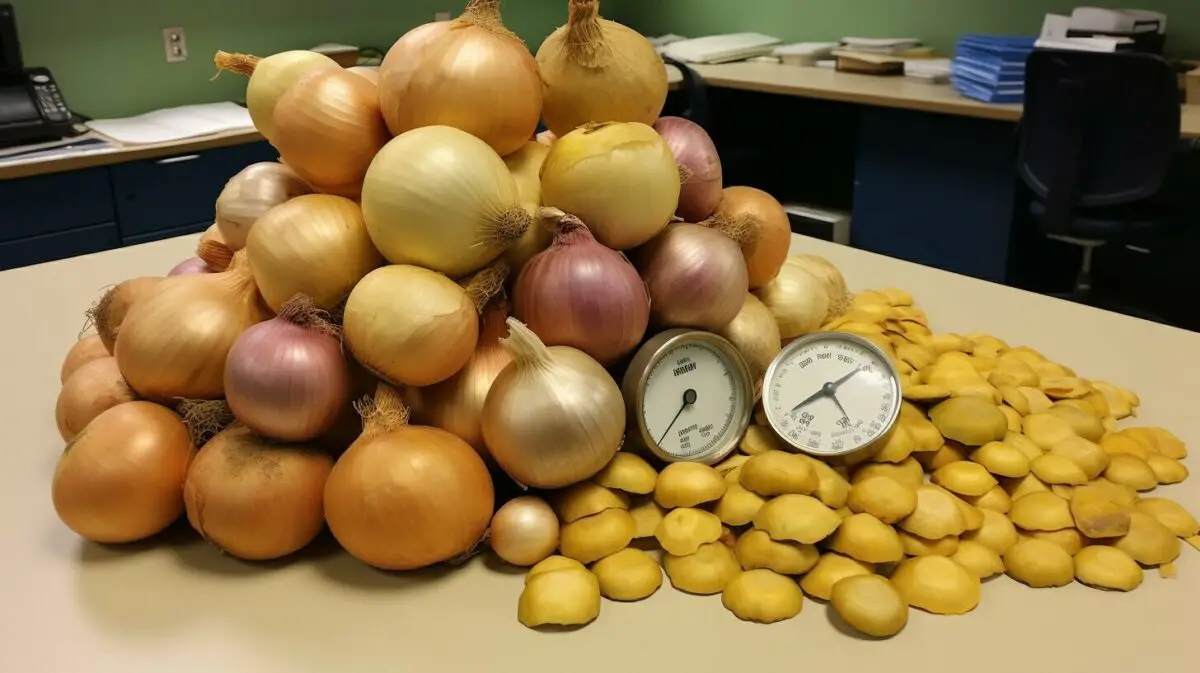
When it comes to using onions in recipes, a few measurement tips can make all the difference in achieving culinary success. Whether you’re sautéing onions for a savory dish or incorporating them into a homemade sauce, understanding how to accurately measure onions is crucial. So, let’s dive into some helpful tips to ensure your onion measurements are spot on.
1. Use an Onion Calculator
For precision in your recipes, consider using an onion calculator. This handy tool can help you determine the exact amount of onions needed based on your recipe’s measurements. Simply input the desired onion measurement, and the calculator will guide you on the number of onions to use. It takes the guesswork out of measuring and ensures consistency in your dishes.
2. Consult an Onion Guide
Don’t let the confusion of onion sizes weigh you down. Consult an onion size guide to help you determine which size is the best fit for your recipe. A guide can provide measurements and descriptions for small, medium, large, and extra-large onions. Knowing the appropriate size will help you achieve the desired flavor and texture in your dishes.
3. Adapt Recipes with Onion Measurements
Recipes often call for specific amounts of onion, but what if you only have a certain size or weight available? Don’t worry! You can adapt recipes by making simple adjustments based on your available measurements. For example, if a recipe calls for one large onion but you only have medium onions, use two instead. It’s all about finding the right balance of flavors.
Fact: Did you know? Approximately 4 cups sliced or 2 cups cooked onions are equivalent to one pound. Keep this in mind when measuring onions for your recipes.
By following these onion measurement tips, you can confidently incorporate onions into your cooking and baking endeavors. Remember, precise measurements are key to achieving the perfect balance of flavors in your dishes. So grab your onion calculator, consult an onion guide, and get creative with your favorite onion-infused recipes!

Onion measurements can vary depending on factors such as size, count, weight, and density, requiring adaptation for accurate recipe execution. When it comes to measuring onions, it’s essential to understand these variations and make the necessary adjustments in your cooking. Let’s take a closer look at how these factors can impact your onion measurements.
Size: Onions come in different sizes, ranging from small to extra-large. The size of an onion can affect the amount needed in a recipe. For instance, a recipe calling for one small onion may require two medium onions instead. It’s crucial to consider the size of the onion when determining the appropriate measurement.
Count: The count refers to the number of onions needed in a recipe. While some recipes may specify the size, others may require a certain number of onions. In cases where the recipe calls for a specific count, it’s essential to adjust the quantity based on the onions at hand. For example, if a recipe calls for four medium onions, you may need to use six small onions instead.
Weight and Density: The weight of an onion can also vary and impact measurements. Additionally, the density of an onion can affect how much space it occupies when sliced or diced. It’s important to consider both weight and density when converting onion measurements. Keep in mind that factors such as peeling, moisture content, and preparation methods can influence the weight and density of the onion.
To ensure accurate measurements, it’s helpful to utilize conversion charts, tables, and ratios specifically tailored to onion measurements. These resources can provide guidelines for estimating the volume, count, and size of onions based on weight. Remember that while conversions provide a useful estimate, variations in onion characteristics may not always result in exact measurements. Adapting your recipes accordingly and relying on your own judgment and taste preferences can help you achieve the desired flavors and textures in your dishes.
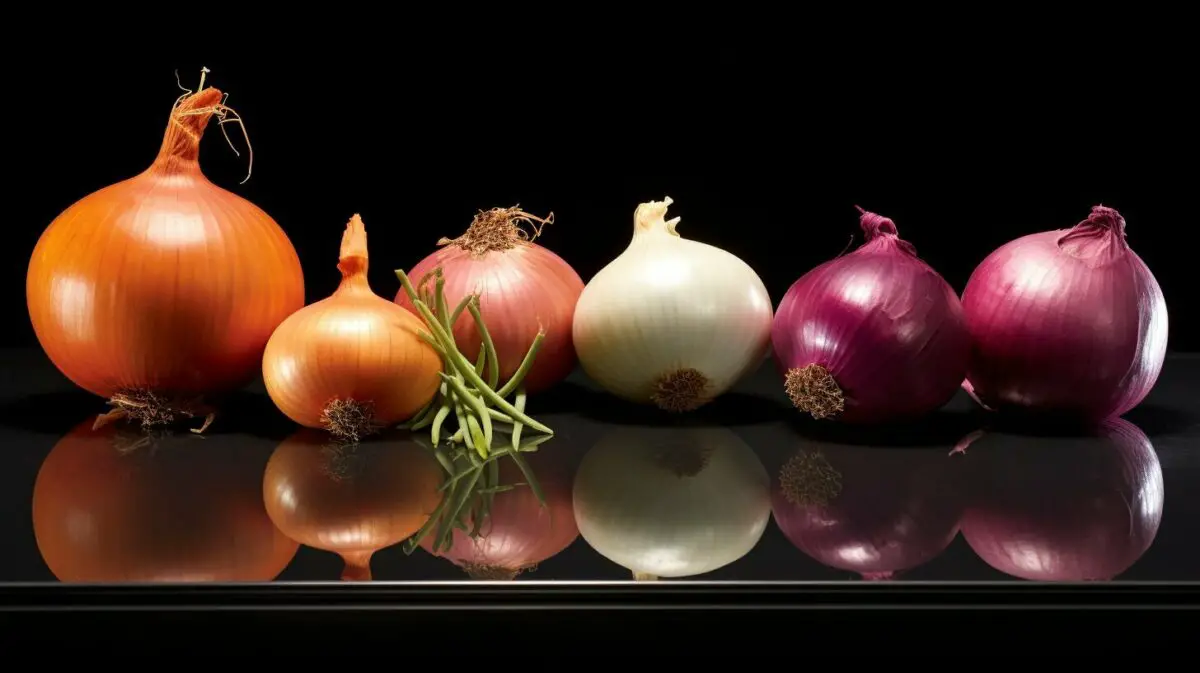
Incorporating precise onion measurements into recipe preparation is crucial for achieving the desired flavors and textures in your culinary creations. When it comes to onions, knowing the right amount to use can make a significant difference in the overall taste of your dishes. Whether you’re sautéing onions for a savory pasta sauce or caramelizing them for a rich soup, using the correct amount of onions can elevate your culinary skills to the next level.
So, how do you ensure accurate onion measurements in your recipes? It all starts with understanding the different ways onions can be measured. From weight to volume, each method has its own conversions and considerations. To help you navigate this culinary terrain, here is a useful table that provides onion measurement equivalents:
| Measurement | Equivalent |
|---|---|
| 1 pound (weight) | 4 cups sliced or 2 cups cooked |
| 1 medium onion (size) | 1 cup sliced |
| 1 small onion (size) | 1/2 cup sliced |
It’s important to note that these conversions provide a general guide, but the specific measurements may vary depending on factors like onion density and preparation methods. However, by following these estimations, you can ensure that your recipes stay on track and deliver consistent and delicious results.
By paying attention to onion measurements, you can confidently embark on your culinary endeavors and create dishes that impress your family and friends. So, the next time you reach for an onion in the kitchen, remember the importance of accurate measurements and let your culinary skills shine!
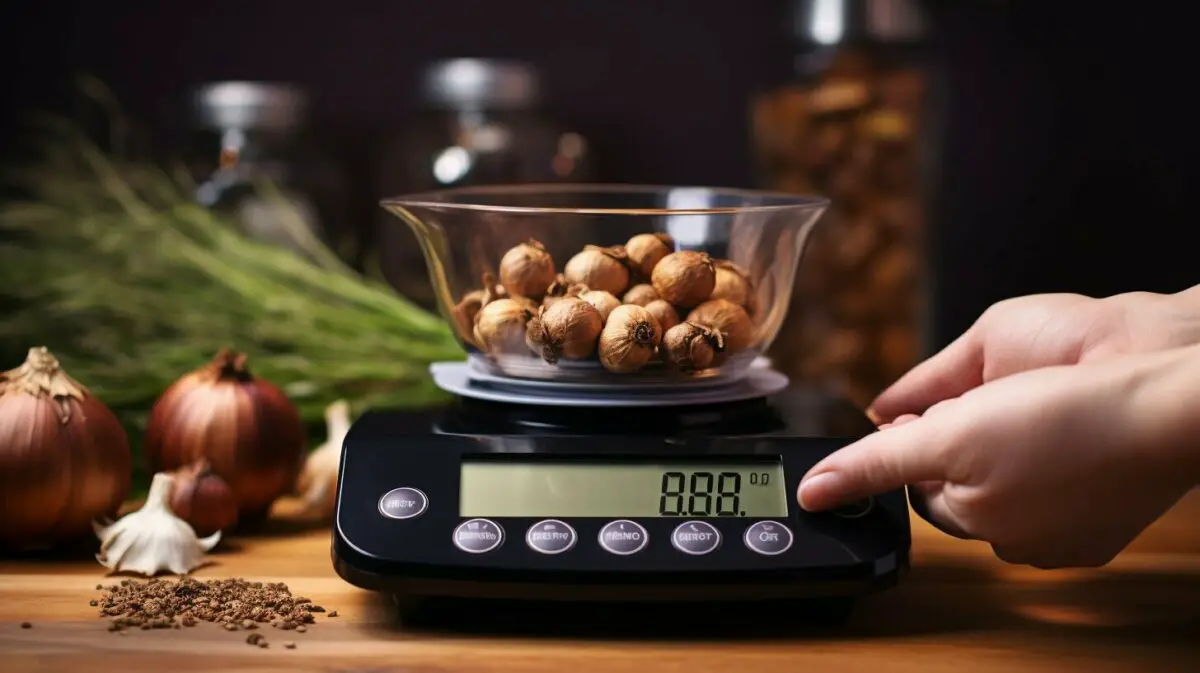
Mastering onion measurement conversions empowers home cooks and professional chefs alike to confidently create delicious dishes that showcase the versatility of this flavorful vegetable. If you are wondering how many onions are in a pound, the answer is approximately 4 cups sliced or 2 cups cooked. This information can be useful when you are following a recipe and need to know how many onions to buy and slice. It is always important to have accurate measurement conversions when cooking, and this chart provides helpful equivalents for various vegetables.
It is worth noting that the conversion may not be exact due to factors like density and preparation methods. However, having a general idea of the measurement equivalences can greatly aid in the planning and execution of your recipes. Whether you’re sautéing onions for a stir-fry, caramelizing them for a savory tart, or adding them to a comforting soup, understanding onion measurements and conversions ensures that you achieve the desired flavor and texture in your culinary creations.
By utilizing conversion charts, tables, and ratios specific to onions, you can easily adapt recipes to suit your needs and preferences. Whether you prefer smaller onions or larger ones, you can confidently adjust the quantities to achieve the desired outcome. Remember to consider factors such as size, weight, and count when making these conversions, as they can greatly impact the final result.
So, the next time you find yourself in the kitchen, armed with a knife and a bag of onions, feel confident in your ability to accurately measure and convert this versatile vegetable. With a little practice and a basic understanding of onion measurement conversions, you can elevate your culinary skills and create tantalizing dishes that are sure to impress.
FAQ – How Many Onions in a Pound
Q: How many onions are in a pound?
A: Approximately 4 cups sliced or 2 cups cooked.
Q: Why is accurate measurement conversion important in cooking?
A: Accurate measurement conversions ensure that recipes turn out as intended and help maintain consistency in cooking.
Q: Can the conversion between onion weight and volume be exact?
A: The conversion may not be exact due to factors like density and preparation methods.
Q: How do I convert onion weight to volume?
A: Use a conversion chart or table to estimate the volume of onions required based on their weight.
Q: How do I convert onion weight to count?
A: There are formulas or conversion ratios that can help estimate the number of onions needed based on their weight.
Q: How do I convert onion weight to size?
A: Guidelines or measurements can be used to determine the appropriate onion size based on its weight.
Q: What is the relationship between onion density and mass?
A: Onion density affects its mass and weight, which in turn can impact measurement conversions.
Q: Are there specific conversion factors and ratios for onions?
A: Yes, there are conversion factors and ratios that are specific to onions and can be used for measurement conversions.
Q: Are there onion measurement conversion tables and charts available?
A: Yes, there are comprehensive conversion tables and charts that provide measurements in various units and equivalents.
Q: What are some common onion measurement equivalences?
A: Common onion measurement equivalences include comparisons or approximations that can be useful in recipes.
Q: What are some tips for measuring onions in recipes?
A: Practical tips and advice can help ensure accurate onion measurements in recipes, including techniques and tools to use.
Q: How do variations in onion measurements affect recipe preparation?
A: Variations in onion size, count, weight, and density can impact measurement conversions and may require adjustments in recipes.
Q: How do I incorporate accurate onion measurements into recipe preparation?
A: Guidelines, tips, and suggestions can help incorporate accurate onion measurements into various recipes and dishes.
Our Friends:
- https://www.amazingfoodmadeeasy.com/produce_converters
- https://www.howmany.wiki/wv/How-many–tbsp–of–chopped onions–in–1–pound
- https://www.almanac.com/measuring-vegetables-recipes-pounds-cups
Related Recipes:
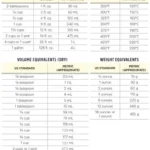 How Many Cups Are in a Liter: Unlocking the Mystery
How Many Cups Are in a Liter: Unlocking the Mystery
 How Many Milliliters in an Ounce? (Perfect Measurement Conversion Guide)
How Many Milliliters in an Ounce? (Perfect Measurement Conversion Guide)
 How Many Cups in a Pound? (Measurement Conversion Guide)
How Many Cups in a Pound? (Measurement Conversion Guide)
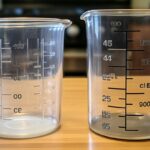 How Many Quarts in a Liter? (Perfect Measurement Conversion Guide)
How Many Quarts in a Liter? (Perfect Measurement Conversion Guide)
 How Many Cups Are in a Quart? (Perfect Measurement Conversion Guide)
How Many Cups Are in a Quart? (Perfect Measurement Conversion Guide)
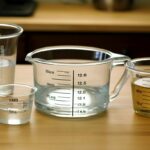 How Many Cups Are in a Liter? (Perfect Measurement Conversion Guide)
How Many Cups Are in a Liter? (Perfect Measurement Conversion Guide)
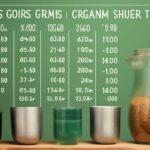 How Many Grams Are in an Ounce? (Perfect Measurement Conversion Guide)
How Many Grams Are in an Ounce? (Perfect Measurement Conversion Guide)
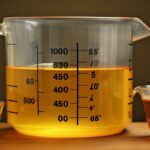 How Many Ounces Are in 750 ml? (Measurement Conversion Guide)
How Many Ounces Are in 750 ml? (Measurement Conversion Guide)



